Historic overview of treatment techniques for rib fractures and flail chest
- PMID: 21841952
- PMCID: PMC3150827
- DOI: 10.1007/s00068-010-0046-5
Historic overview of treatment techniques for rib fractures and flail chest
Abstract
Introduction: From the beginning of the twentieth century till the current time, an overview is presented of the surgical treatment for rib fractures and flail chest.
Methods: Many techniques have been used to stabilize the thorax wall. There has been no follow-up for the most described techniques and the evidence provided is at its best at L3-4. This, together with the noninvasiveness of mechanical ventilation, has made the latter the golden standard.
Conclusion: However, the recent introduction of better and fully dedicated materials provides the possibility of exploring the surgical treatment of chest injuries. The authors make a case for operative treatment of rib fractures and flail chest.
Figures


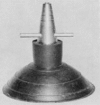



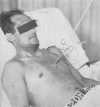


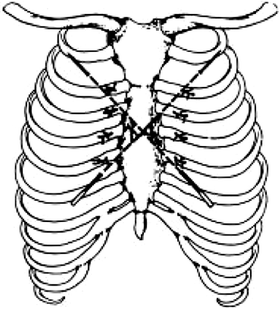

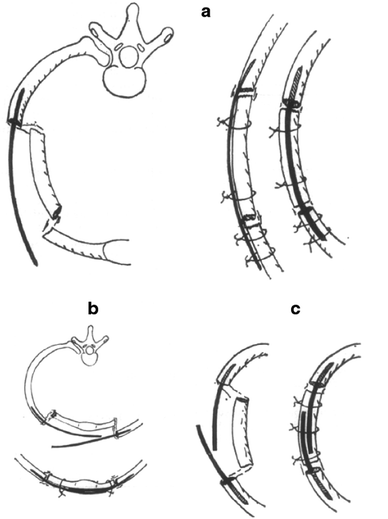
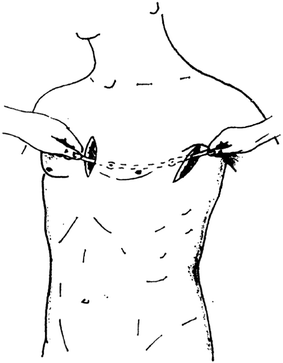






Similar articles
-
[A contribution of multidetector computed tomography to indications for chest wall stabilisation in multiple rib fractures].Acta Chir Orthop Traumatol Cech. 2011;78(3):258-61. Acta Chir Orthop Traumatol Cech. 2011. PMID: 21729644 Czech.
-
Operative Stabilization of Flail Chest Injuries Reduces Mortality to That of Stable Chest Wall Injuries.J Orthop Trauma. 2018 Jan;32(1):15-21. doi: 10.1097/BOT.0000000000000992. J Orthop Trauma. 2018. PMID: 28902086
-
Severe trauma of the chest wall: surgical rib stabilisation versus non-operative treatment.Eur J Trauma Emerg Surg. 2013 Jun;39(3):257-65. doi: 10.1007/s00068-013-0262-x. Epub 2013 Feb 16. Eur J Trauma Emerg Surg. 2013. PMID: 26815232
-
Operative Treatment of Rib Fractures in Flail Chest Injuries: A Meta-analysis and Cost-Effectiveness Analysis.J Orthop Trauma. 2017 Feb;31(2):64-70. doi: 10.1097/BOT.0000000000000750. J Orthop Trauma. 2017. PMID: 27984449 Review.
-
Operative management versus non-operative management of rib fractures in flail chest injuries: a systematic review.Eur J Trauma Emerg Surg. 2017 Apr;43(2):163-168. doi: 10.1007/s00068-016-0721-2. Epub 2016 Aug 29. Eur J Trauma Emerg Surg. 2017. PMID: 27572897 Free PMC article. Review.
Cited by
-
Surgical stabilization of rib fractures (SSRF): the WSES and CWIS position paper.World J Emerg Surg. 2024 Oct 18;19(1):33. doi: 10.1186/s13017-024-00559-2. World J Emerg Surg. 2024. PMID: 39425134 Free PMC article. Review.
-
Refining animal welfare of wild boar (Sus scrofa) corral-style traps through behavioral and pathological investigations.PLoS One. 2024 May 21;19(5):e0303458. doi: 10.1371/journal.pone.0303458. eCollection 2024. PLoS One. 2024. PMID: 38771820 Free PMC article.
-
Surgical stabilization of multiple rib fractures in an Asian population: a systematic review and meta-analysis.J Thorac Dis. 2023 Sep 28;15(9):4961-4975. doi: 10.21037/jtd-23-1117. Epub 2023 Sep 18. J Thorac Dis. 2023. PMID: 37868848 Free PMC article.
-
Clinical Outcomes of Minimally Invasive Surgical Stabilization of Rib Fractures Using Video-Assisted Thoracoscopic Surgery.J Chest Surg. 2023 Mar 5;56(2):120-125. doi: 10.5090/jcs.22.119. Epub 2023 Jan 30. J Chest Surg. 2023. PMID: 36710576 Free PMC article.
-
The Chinese consensus for surgical treatment of traumatic rib fractures 2021 (C-STTRF 2021).Chin J Traumatol. 2021 Nov;24(6):311-319. doi: 10.1016/j.cjtee.2021.07.012. Epub 2021 Aug 2. Chin J Traumatol. 2021. PMID: 34503907 Free PMC article. Review.
References
LinkOut - more resources
Full Text Sources


